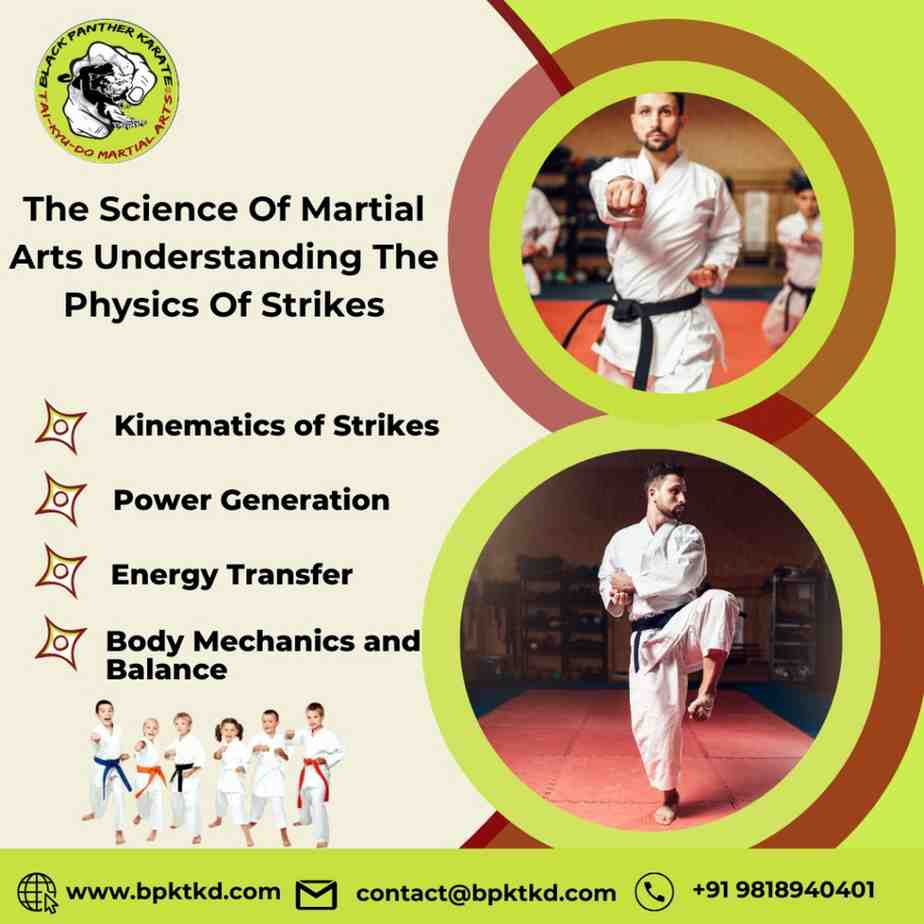
The science of martial arts: comprehending the physics of blows
The Science of Martial Arts: Deciphering the Physics Behind Powerful Strikes with Insights from Karate Organizations in Ghaziabad, UP
Introduction:
Martial arts, beyond its physical and spiritual dimensions, is a science in itself. The precise execution of techniques involves a deep understanding of physics, biomechanics, and kinetics. In this blog, we delve into the intricacies of the science of martial arts, with a focus on the physics behind powerful strikes. Drawing insights from Karate Organizations in Ghaziabad, UP, we explore how the principles of physics are applied to enhance the effectiveness of martial arts techniques.
Understanding the Physics of Strikes:
Force and Mass:
The fundamental principle behind a powerful strike is the equation Force = Mass × Acceleration (F=ma). In the context of martial arts, force is the impact generated by a strike, mass is the weight of the striking limb, and acceleration is the speed at which the limb moves. Karate practitioners in Ghaziabad emphasize the importance of proper body mechanics to maximize force during strikes.
Center of Mass and Balance:
The concept of the center of mass is crucial in martial arts. A well-executed strike involves the transfer of body weight and the alignment of the body’s center of mass with the intended target. Karate Organizations in Ghaziabad stress the significance of maintaining balance and proper body alignment to ensure efficient energy transfer during strikes.
Rotational Dynamics:
Rotational dynamics come into play when executing techniques that involve spinning or rotation. For example, roundhouse kicks in karate rely on the principles of rotational dynamics to generate speed and power. Karate practitioners in Ghaziabad are trained to understand how to initiate and control rotational movements for optimal striking force.
Momentum Conservation:
The law of conservation of momentum states that the total momentum of a system remains constant unless acted upon by an external force. In martial arts, the conservation of momentum is evident in techniques like the straight punch or reverse punch, where the practitioner’s body mass contributes to the overall momentum of the strike. Karate Organizations in Ghaziabad often incorporate drills that emphasize the proper generation and conservation of momentum.
Insights from Karate Organizations in Ghaziabad, UP:
Biomechanics Workshops:
Karate Organizations in Ghaziabad conduct specialized biomechanics workshops to educate practitioners on the science behind their movements. These workshops delve into the principles of leverage, joint mechanics, and muscle activation to optimize the efficiency of strikes. Understanding biomechanics enables martial artists to fine-tune their techniques for maximum impact.
Emphasis on Core Strength:
The core plays a pivotal role in martial arts, serving as the center of power for many striking techniques. Karate Organizations in Ghaziabad place a strong emphasis on developing core strength through specific exercises and training drills. A strong core enhances stability, balance, and the ability to generate force from the center of the body.
Integration of Technology:
Some Karate Organizations in Ghaziabad leverage technology to analyze and enhance striking techniques. High-speed cameras and motion-capture systems allow instructors to provide detailed feedback on a practitioner’s form, speed, and precision. This integration of technology aids in refining the subtle nuances of strikes based on scientific principles.
Individualized Training Programs:
Recognizing that each practitioner is unique, Karate Organizations in Ghaziabad offer individualized training programs. These programs take into account factors such as body type, flexibility, and strength, tailoring training regimes to optimize the physics of strikes for each individual. This personalized approach contributes to the overall effectiveness of a martial artist’s techniques.
The Integration of Physics and Martial Arts Mastery:
Mastery of martial arts involves the integration of scientific principles into the art form. Beyond the physical conditioning and memorization of techniques, practitioners who grasp the science behind their movements can elevate their skills to a new level. The fusion of physics and martial arts is a continuous journey of refinement, where practitioners in Ghaziabad and beyond strive to enhance their understanding of the forces at play during every strike.
Conclusion:
The science of martial arts, particularly the physics behind powerful strikes, adds a layer of depth to the art form. In Ghaziabad, UP, Karate Organizations are at the forefront of incorporating scientific principles into their training methodologies. As practitioners explore the physics of strikes, they not only enhance the effectiveness of their techniques but also gain a profound appreciation for the intricate dance between body mechanics and force generation. The fusion of science and martial arts in Ghaziabad reflects the evolution of traditional practices, making the journey of self-discovery and skill refinement even more dynamic and rewarding.

